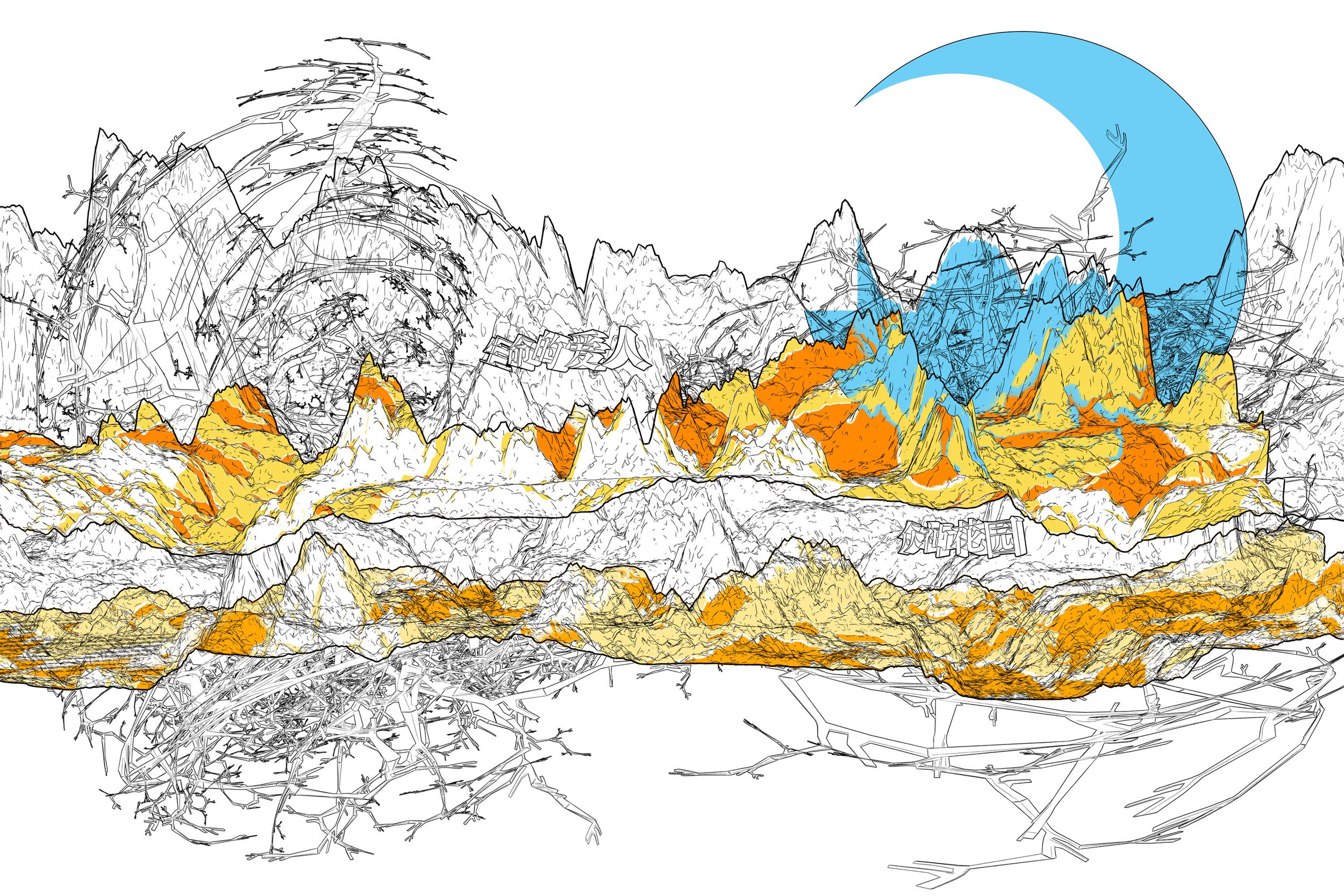CAN X TWo temple place
Site-specific Digital Exhibition, 2021
Artists: Chloe Wing, Donald Shek, Jack Tan, and Jasmin Kent-Rodgman
Curators: Rebecca Hone, Jodie Gilliam
Exhibition Space Designer: Christine Urquhart
William Waldorf Astor, who built Two Temple Place was part of one of the great immigrant dynasty success stories. His great-grandfather migrated from rural Germany to America in the 1790s. Within a few years, the Astor family was rubbing shoulders with Presidents and owned huge sections of New York, including vast slums.
The exhibition was originally conceived as a live exhibition but due to the limitations of COVID restrictions required a new way of exhibiting and participating in artist residencies with no physical location. As part of the CAN Festival 2021, a few artists and Donald Shek took together as a group to exhibit work that explored the relationship of their work with the history of William Waldorf Astor’s architectural fantasia on the Embankment.
Heaven’s Scrolls, Single Colour Screenprint on cotton and alloy sheeting, Jan 2021.
The scrolls of heaven aim to raise the fundamental questions of identity and perception. The stories from the past help us find meaning in this complicated world. To find that common quest to feel a sense of belonging or understanding of why. The past and written histories also define who we are but do not necessarily form the whole or even the truth as it paints a picture of a group and not the individual. It can also distort or in some cases eliminate intended meaning. It is the acts of ‘being’ in the past that define the individual, that point in history in each person’s life that can hold meaning that no other person can eliminate or even replicate with authenticity. We are not defined by the words that someone wrote about us, defined purely by the colour of our skin, the religion we preach, or our class in the social milieu, but by the actions we take in the battle for life.
“ I am not who you think I am; I am not who I think I am; I am who I think you think I am.”
Charles Cooley
Life of the Body, 4 Colour Screenprint on paper, Jan 2021.
Life of the Body should be read as a whole with the Lover of Life. The works are named after Lif and Lifthrasir, female and male respectively, are two humans who are foretold in Norse Mythology to survive the events of Ragnarok by hiding in a wood called Hoddmimis holt and, after the flames have abated, to repopulate the newly risen and fertile world.
The garden of the gods is defined by a layer of ‘Mountain’ scapes that may at first glance appear to depict the rugged landscape, but are just digital displacements of Thiessen polygons. The branches are simple L-systems to represent the world tree extending through the strata of realms, connecting the underworld to the heavens above.
“Don’t mistake the moon, for a finger pointing at the moon.”
Life of the Body, 4 Colour Original Silkscreen Print on Paper, Two Temple Place, London, UK, Jan 2021 (Photo by Johan Persson).
Lover of Life, 4 Colour Screenprint on paper, Jan 2021.
The axis Mundi exists in all mythologies, be it a column, a mountain, or a tree. This mythological concept represents “the connection between Heaven and Earth” or the “higher and lower realms.” One psychological and sociological interpretation suggests that the symbol originates in a natural and universal psychological perception - i.e., that the particular spot that occupies stands at “the centre of the world.” This space serves as a microcosm of order because it is known and settled. Outside the boundaries of the microcosm lie foreign realms that - because they are unfamiliar or not ordered - represent chaos, death or night. From the centre, one may still venture in any of the four cardinal directions, make discoveries, and establish new centres as new realms become known and settled. This symbolic vertical path of “ascent” or “descent” into other spiritual or material realms captures the philosophy that considers human life to be a quest in which one develops insights or perfections to move beyond this current microcosmic realm and to engage with the grand macrocosmic order.
“One must have chaos in oneself to give birth to a dancing star.”
Friedrich Nietzche, Thus Spoke Zarathustra.



